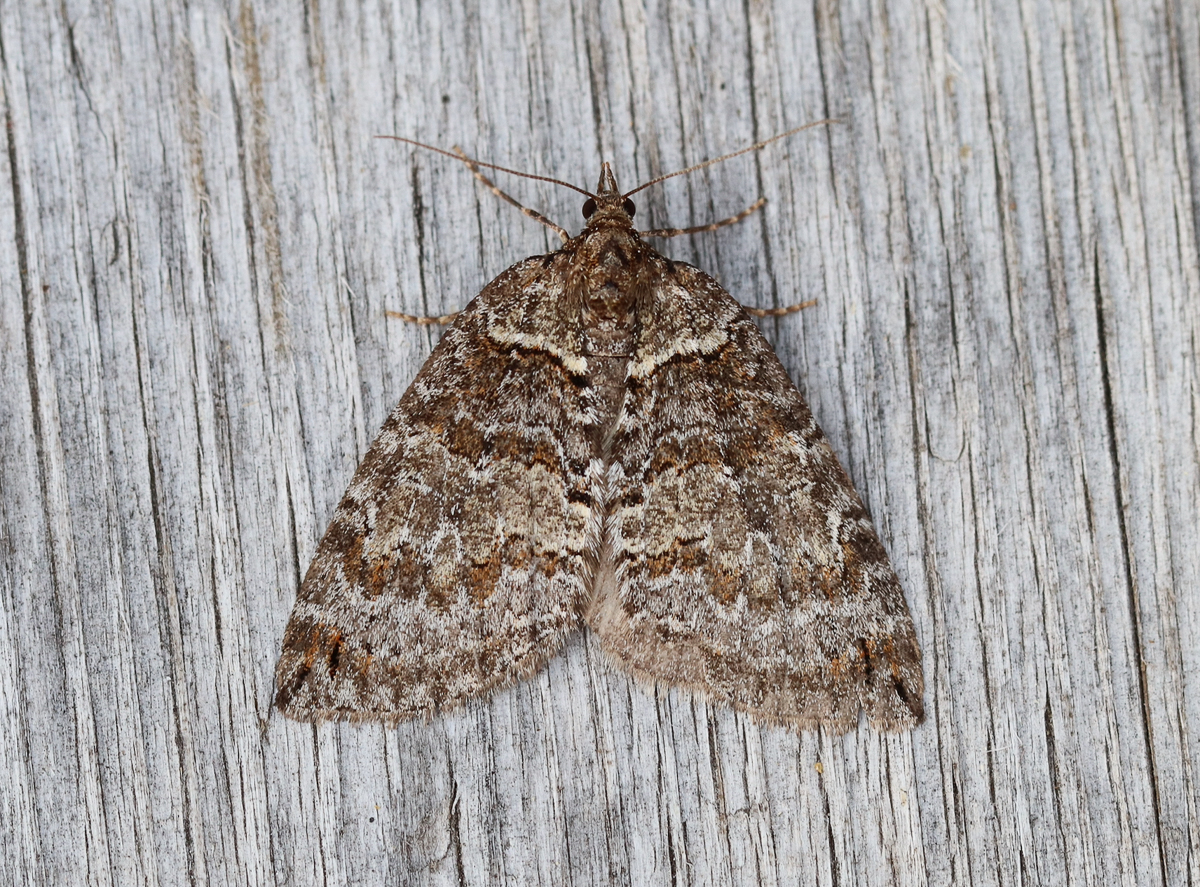
Photo © Jason Grant
Hydriomena ruberata, the ruddy highflyer, is a moth of the family Geometridae. The species was first described by Christian Friedrich Freyer in 1831. It is found from Ireland and Great Britain east to north-western Russia, and south up to the Alps. It is also present in North America.
The wingspan is 29-37 mm. It is very similar to Hydriomena impluviata. It is "distinguishable from the preceding species [Hydriomena impluviata] by the characters noted above (qv.) and the greater prevalence of reddish or rust-coloured tone. Subbasal line variable, often strongly angled in the cell, sometimes thickened at the angle and again at the hindmargin; antemedian rust-coloured band often ending in a conspicuous black spot at hindmargin;in the distal area the black line on the first radial is generally strong, those on the 5th subcostal second radial rarely so; black apical streak generally conspicuous. The name-type is grey, sharply marked, with the rust colour reduced to 4 narrow, inconspicuous bands. The larva is relatively powerful with a few short bristles, light reddish grey-brown in colour.
There is one generation per year, with adults on wing from mid-May to July.
The larvae feed on Salix species (including S. phylicifolia and S. aurita). Larvae can be found from June to September. It overwinters as a pupa.
Source: Wikipedia
The primary larval foodplants are Eared Willow (Salix aurita), Grey Willow (Salix cinerea), Heather (Calluna vulgaris) and Tea-leaved Willow (Salix phylicifolia).